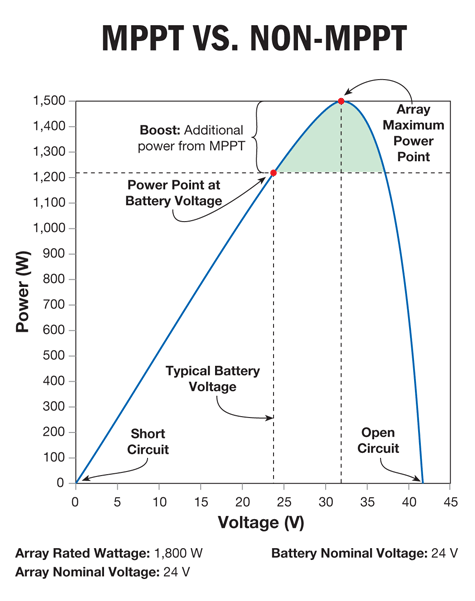A good friend Chris Warren(of http://twentyfirstsummer.com/ and http://offgridham.com) , wrote a GREAT article about something all Amateur Radio Ops are interested in, Solar charging systems. Whether for off the grid living or running you radio remotely without a generator, capturing and converting solar energy into battery storage is a skill set every ham or prepper should know.
I will include a short piece of his article here and a link to his site so that you can read the entire article:

The solar charge controller is arguably the most important component of a solar energy system. Like the conductor of an orchestra, the solar charge controller makes it possible for all the other parts to work together. Understanding how a solar charge controller performs its task is important to planning for your own off grid energy needs.
Solar panels greater than 20 watts or so generally cannot be directly connected to a load because the voltages they produce are not compatible with most batteries and equipment: A “12 volt” panel can go as high as 17-19 volts in bright sunlight. And an obvious problem exists when you have a 24 or 48 volt solar array and a 12 volt load. A proper solar charge controller will take care of all these issues.
Why can’t they just make solar panels that produce the correct 12 volts? The nature of solar panels are that output can change quite a bit according to light levels, temperature, and many other factors. With current technology there is no such thing as a solar panel that will produce a stable voltage at all times, under all conditions. To get around this problem, solar panels are designed with a lot of extra wiggle room to allow for poor operating environments. Just as it would not be practical to have a car with the engine connected directly to the wheels, solar panels need a go-between to smooth everything out. The solar charge controller is to your off grid power system what the transmission is to your car.
Pulse Width Modulation (PWM) is the most common, least expensive, and easiest to deploy solar charge controller technology. Often incorrectly referred to as DC to DC converters, they are really switches similar to a switching power supply that match the source voltage (solar panel output) to the load voltage (usually a 12 volt battery).
PWM is relatively simple and has been around for decades. One disadvantage is that under most conditions a PWM solar charge controller will not take advantage of the full capacity of the panels. Ohm’s Law states that current is inversely proportional to voltage. Yet, a PWM solar controller will not do anything with current. When the high voltage from the panel is converted down to a useable 12 volt form, the current out will always be equal to or lesser than current in. This results in an unavoidable net loss of power. Here is an example of this idea from my own home solar power system:
I have 135 watt Kyocera panels with a rated output of 17.7 volts at 7.63 amps. Using Ohm’s Law:
17.7 volts x 7.63 amps = 135.051 watts
However, 17.7 volts is not useful to the amateur radio operator. The voltage needs to be converted down to approximately 13.5 volts to support a 12 volt battery and run amateur radio gear. Keep in mind that on a PWM solar controller, the output current will never exceed the input current:
13.5 volts x 7.63 amps = 103.005 watts.
In our real world example above, a standard PWM charge controller will give up over 30 watts of otherwise useable power. That is an immediate 24% loss before any other factors are included.
The chart below for a 12 volt system shows the main disadvantage of PWM devices. Notice that the maximum power point (MPP) of the panel is well outside the voltage range of the controller and is too high for amateur radio use. The strip of space between the left edge of the greyed area and the vertical dashed line represents throwaway power.
Read the rest of the article here:
http://offgridham.com/2015/12/solar-charge-controller/
For examples of these different types of controllers, check out some of them on Amazon
Amazon Solar Charge Controllers
Leave a Reply
You must be logged in to post a comment.